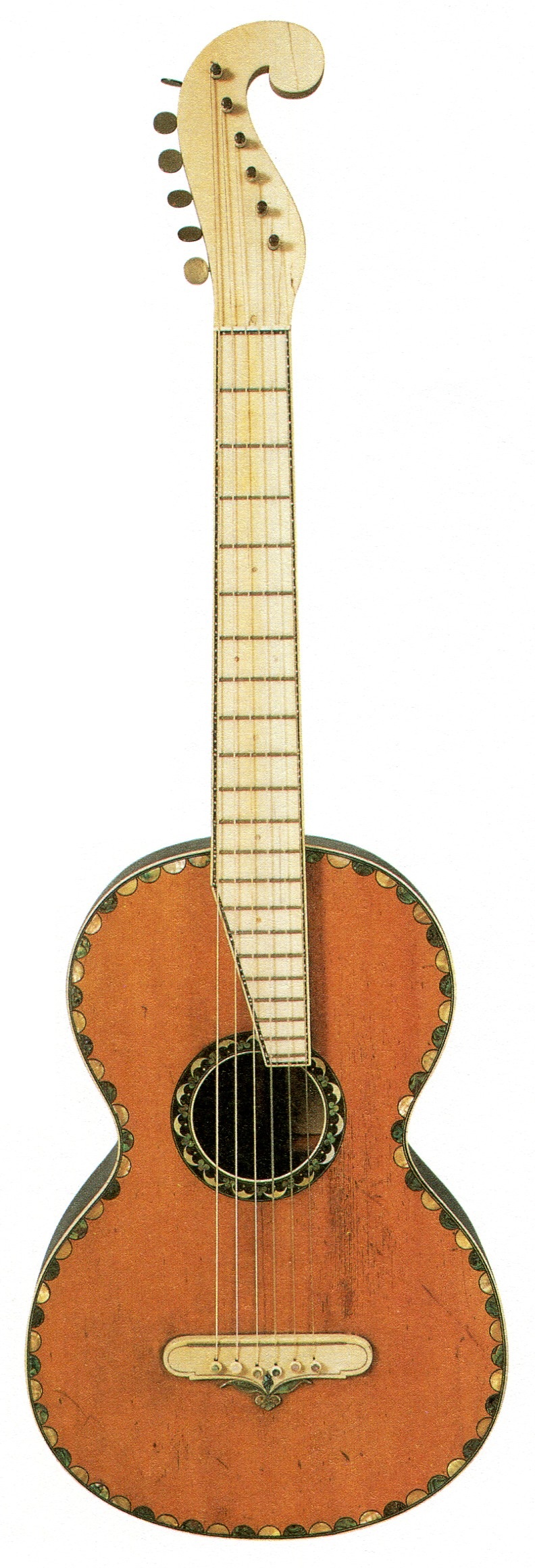Martin Stauffer style

Christian Friedrich Martin worked in his early years as a foreman for JohannStauffer of Vienna, Austria, one of the most important figures in the development of the guitar in the first half of the 19th century.
After a guild dispute in Martin’s home town of Mark Neukirchen, Saxony (in eastern Germany), he emigrated to NY in 1833. Not surprisingly, Martin’s earliest guitars looked very much like Stauffers.
The large upper bout, giving the body an almost-symmetrical hourglass shape, was typical of Stauffer’s instruments, as was the scrolled peghead shape with all the tuners on the bass side. The ornamentation was nothing short of opulent – and quite a contrast to the reserved elegance that became a hallmark of Martins from the 1850s to today. The fingerboard, peghead veneer, bridge, and even the bridge pins are all made of elephant ivory. The top is bordered with alternating green and white pearl.
After six years in NY, C.F. Martin relocated in 1839 to Nazareth, PA, leaving the retail music business and Germanic guitar influences behind him.
